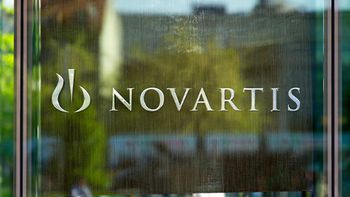
- Pharmaceutical Commerce - May/June 2014
2014 Biopharma cold-chain forecast
Global industry will spend $8.36 billion on cold chain logistics this year
Fig. 1. Overall trend for biopharma and biopharma cold-chain product sales.
Maintaining a secure “cold chain” through the storage, handling and transportation of temperature-sensitive drugs, vaccines and blood products assures product quality and integrity for the benefit of the patient, and keeps the manufacturer, hospital, pharmacist, physician and nurse in compliance with various laws, regulations, guidelines and codes. In clinical trials, where following protocols is so essential to obtaining meaningful results, maintaining the cold chain also preserves the validity of the tests.
It costs more to keep products at 2—8°C or at frozen temperatures than it does to keep them at uncontrolled ambient conditions; more to pack and transport them cold; more to demonstrate by process qualification or by measurement that each shipment stays cold. But industry and society benefit enormously when temperature-sensitive drugs and biological products can be made in efficient large batches, stored until needed, and shipped around the world.
In this fifth annual forecast from Pharmaceutical Commerce, we extend our market-trend predictions for cold-chain and clinical trial logistics to 2018, and provide insights on the forces that are driving or slowing growth across these essential global industries and in particular segments and regions.
For cold-chain logistics, the top driver is the greater adoption of cold-chain products in developing markets; the continued but slowing development of new drugs also contributes to growth, mainly in developed markets; slower global economic and population growth is a negative. The outlook is for continued expansion through 2018, at an average growth rate of about 6% per year, about the same as the 6% uptrend in the 2011—2017 forecast last year.
For clinical trials, the overall outlook is relatively steady, as the business depends on R&D for product development. The slowdown observed over the past few years is not expected to continue, and we are projecting an annual 1—2% growth in clinical logistics spending, vs. a slow downtrend forecast last year.
Fig. 2. Breakdown of cold-chain logistics costs.
2014 market sizing
Biotechnology products, blood products and vaccines, like the living cells from which they are derived, are susceptible to injury from excessive heat and often also from freezing, with the accompanying loss of their therapeutic and financial value. Since the 1980s, when the commercial biotechnology industry introduced its first products, the global market for such products has expanded enormously. It measures more than $200 billion in value, and the special logistics for maintaining the quality of temperature-sensitive products as they are shipped around the world account for about 13% of all biopharma logistics spending.
Our estimate of cold-chain logistics spending in 2014 (Fig. 3) is that it will be about $8.4 billion worldwide, in a $64 billion overall pharma logistics market, of which $5.6 billion is transportation and $2.8 billion is specialized tertiary packaging and instrumentation such as insulated boxes, blankets, phase-change materials, active temperature-control shipping containers and various temperature sensors and recorders. As shown in Fig. 2, much of this is spent on shipments sent via providers of air freight and 1—3 day parcel (mail, express and courier) services. Rapid truck freight and package service is also widely used and refrigerated sea cargo is also available as is packaging qualified for 7+ day shipping cycles.
Driving forces for cold-chain spending growth
The biggest drivers of cold-chain logistics over the next few years will be the continued development, approval and market penetration of biotechnology-derived drugs, and the expansion in both usage and production of these drugs and other cold-chain products in emerging markets.
In 2009, five of the top 10 best-selling pharma products in the world were biotechnology-derived large molecules requiring refrigerated storage and handling at 2—8°: Enbrel, Rituxan, Remicade, Avastin and Humira. By 2018 it will be seven of the top 10, with Humira #1, and 26 of the top 50. Sales growth of such products will be slower than the double-digit rates of the past few years but faster than conventional small-molecule drugs, and will be driven by price increases as much as by volume growth and new approvals. In 2013, the US Food and Drug Administration Center for Drug Evaluation & Research (CDER) approved four biologics, and 24 new molecular entities, of which all the biologics and two of the NMEs require cold-chain handling.
Also in the cold chain, vaccine sales are growing around 7% per year. Sales of insulin, the top cold-chain drug, are growing 6—7% per year globally, and more than 20% per year in emerging markets such as China, which as of 2013 had about one-quarter of the world’s diabetic population but used only 6% of the world’s insulin. While these rates are slower than the double-digit pace of prior years they are substantially faster than small molecules. Altogether, cold-chain biopharma products are already above $200 billion in sales, with growth tracking around 8% per year, and making up about 23% of the global biopharma market.
With such a scale of production, cold-chain handling has drawn increased regulatory interest and over the past five years particularly both government and industry have put forward practical guidances for qualifying cold-chain transportation processes, sensors and packaging in much the same way as manufacturing processes are qualified as part of Good Manufacturing Practices (GMPs). Specifically, there is now a growing body of approved Good Distribution Practices (GDPs). Industry has responded energetically and expertly, such that logistics managers using qualified packages, pack-outs and channels today consider those to be reliable strong links in their supply chain and capable of “absorbing risk” from other aspects of logistics.
In 2013, the European Union’s new “Guidelines of 5 November 2013 on Good Distribution Practice of Medicinal Products for Human Use” went into effect, superseding their original four-page guideline dating to 1994 (EU 94/C 63/03). Also in 2013, China’s State Food and Drug Administration’s revised “Good Supply Practice for Pharmaceutical Products” went into effect, as did Saudi Arabia’s first GDP.
Australia, Canada, Indonesia, Ireland, Malaysia, Singapore and other countries updated cold-chain rules in the past three years. Likewise United States Pharmacopeia, International Air Transport Association, and the Parenteral Drug Association published new guidances or draft revisions of their guidances, and WHO and others have revisions in progress.
These and other regulations continue to expand the scope of temperature monitoring and control. The new EU GDP prompted immediate increased attention to controlled room-temperature products as well as cold-chain products. In other countries, local requirements for documentation of temperature history for imported drugs continue to expand. Pharma companies and their logistics providers have risen to the task of following all these rules, particularly for high-value cold-chain products, and also taken on challenges of operating efficiently worldwide, aided in some cases by strategic regional investments and acquisitions.
Fig. 3. Cold chain logistics as part of total biopharma logistics 2014
Cold-chain biopharma logistics forecast 2012—2018
By 2018, world sales of cold-chain drugs and of biologics such as vaccines and blood plasma products will likely top $300 billion, in a global biopharma market exceeding $1.2 trillion, based on inputs from IMS Health, Evaluate Pharma and other sources (Fig. 1). Growth in sales of cold-chain products is expected to outpace overall industry growth, partly because, having little or no competition for these products, their manufacturers are able to raise prices much more than makers of other drugs which have downward price pressure from generics. As projected in prior Sourcebooks, most of the growth in sales will be outside North America and Europe.
Driven by these and other factors, cold-chain logistics spending will expand from about $7 billion in 2012, and $8 billion in 2014, to more than $10 billion by 2018. These dollar growth estimates are based primarily on volume growth, with some changes in transport and packaging modes, but with transport and packaging costs being treated as constant over the forecast term. Last year, we estimated about $7 billion spending in 2013, and $9 billion by 2017.
Of the total $15-billion-range predicted growth in biopharma logistics spend between 2012 and 2018 in this year’s forecast, cold chain represents $3 billion. Asia is expected to account for the largest regional share, more than $1 billion, of cold-chain growth through 2018.
Clinical trials logistics
Clinical trials logistics is an adjacent and very substantial market for temperature-assured transportation and packaging. It involves shipment of products to be used in trials to study sites which may be dispersed around the globe, and return of unused medicines, as well as shipment of medical samples to centralized analytical laboratories.
Generally speaking, clinical trials logistics involves smaller quantities of products or test materials—even individual dosages or patient test samples—but a higher level of logistics services, including “white-glove” courier services with constant monitoring and with replenishment of cooling materials. With a multi-million-dollar clinical trial for a multi-billion-dollar drug depending on a small number of test products and samples, each delivery has extraordinary potential value.
Clinical logistics includes some handling of refrigerated or frozen drugs and biologics, on the way from the maker to clinical sites, but it also includes temperature-assured handling of other products, and return shipments of patient samples and unused medicines. With approval of profitable and beneficial new products riding on these studies, pharmas have consistently paid for very high levels of care, creating a multibillion-dollar service sector just for the several millions of subjects involved in trials at any given time.
This year we are updating our estimate and forecast for the market size, to just under $3 billion in 2014. Industry R&D is recovering from the recent pullback by top US companies, and clinical trials logistics will follow, with spending expanding gradually through 2018 to more than $3 billion.
The trend reflects generally steady clinical-trial activity, with new and growing biopharma companies picking up the slack from some of the biggest firms. Likewise, a steady global distribution of trials, leveling off a trend to move trials out of the US and into local sites in Asia and elsewhere. Individual segments of the market may see different trends. For instance, one of the top contract research organizations is looking for 4—6% annual growth in outsourced work, on top of 1–2% R&D growth, to drive their clinical-research business faster than the R&D market.
The 2014 Pharmaceutical Commerce Biopharma Cold Chain Sourcebook is available for purchase; contact Nick Basta at (718) 282-6112, or
Articles in this issue
over 11 years ago
How secure are your laboratory refrigeration systems?over 11 years ago
Vetter offers standardized "clinical syringe" packagesover 11 years ago
Three new facilities are announced for UPS in Latin Americaover 11 years ago
Cegedim survey updates industry response to aggregate-spending rulesover 11 years ago
Limits to Big Data in healthcare analyticsover 11 years ago
Cold-chain packager combines tracking with asset managementNewsletter
Stay ahead in the life sciences industry with Pharmaceutical Commerce, the latest news, trends, and strategies in drug distribution, commercialization, and market access.




